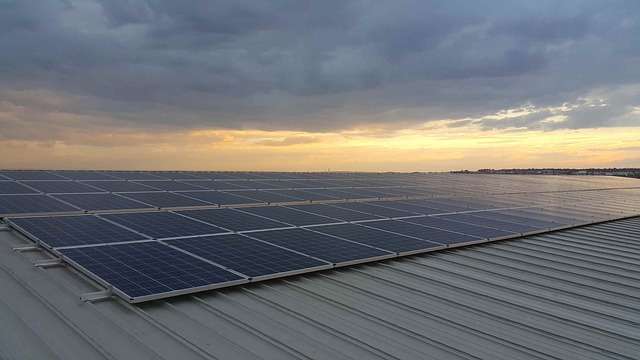
In the lush landscape of East Devon, England, a four-bedroom home stands as a testament to a greener future. This bastion of sustainability is part of a burgeoning movement within the United Kingdom, marked by an increasing demand for eco-friendly materials and energy-efficient dwellings. As the call for harmony with the environment grows louder, a new chapter of real estate is being written, one that integrates ecological consciousness into its core.
Leading the charge in the transformation of the UK’s property scene is Hand Over Projects, a visionary architectural firm that has carved a niche in the realm of sustainable building practices. Under the guidance of Radwa Rostom, the firm has risen to prominence through its pioneering use of natural materials such as cob—a concoction of soil, straw, and water—rammed earth, and hemp blends. These materials symbolize a departure from traditional construction reliant on carbon-intensive materials like steel, offering an alternative that is not only eco-friendly but also resilient and cost-effective.
The essence of Hand Over Projects’ philosophy extends beyond the mere selection of building materials. They advocate for wall-bearing systems over the conventional column and beam structures, streamlining the construction process and producing enduring buildings that withstand the elements without breaking the bank. Their building methods, favoring hands-on techniques such as manual ramming, demonstrate their unwavering commitment to minimizing environmental impact. Furthermore, they implement thorough maintenance schedules to guarantee the durability of their projects—reflecting their dedication to both environmental stewardship and social responsibility.
As Hand Over Projects forges ahead with cob houses and rammed earth construction, the wider UK housing market is similarly experiencing a palpable shift toward eco-friendly homes. Rightmove, a prominent property portal, underscored this trend in celebration of Earth Day by showcasing a handpicked assortment of eco-friendly homes on the market. This initiative did more than commemorate Earth Day—it signified a profound change in buyer attitudes, recognizing the intrinsic value of living in sync with our planet.
The importance of Energy Performance Certificates (EPC) in property listings has surged, with a notable increase in homes featuring superior EPC ratings. This surge is a strong indicator of the industry’s pivot toward sustainable living, encompassing the adoption of green building materials and renewable energy sources. Rightmove’s Director of Property Science, Tim Bannister, has highlighted the role of property portals in enlightening potential buyers about the advantages of eco-friendly features, further evidence of the sector’s commitment to sustainable practices.
Eco-friendly homes are designed with sustainability at their core, integrating elements that enhance energy efficiency, such as maximizing natural lighting and improving air circulation. Their presence in the market is growing, driven by an expanding consciousness and preference for environmentally sound living spaces. Real estate professionals are leveraging higher EPC ratings as a key selling point, emphasizing the dual benefits to homeowners and the environment.
Opting for an eco-friendly home goes beyond aesthetic preference; it represents a pledge to a more sustainable community and planet. As Earth Day and similar initiatives amplify discussions around environmental responsibility, the real estate market’s shift toward eco-friendly properties is a significant indicator of a future that prioritizes ecological awareness and energy conservation.
The impetus towards sustainable living and environmentally conscious construction is not only gaining momentum; it is fundamentally altering the housing industry’s landscape. Trailblazers like Hand Over Projects, alongside Rightmove’s initiatives, are illuminating the path toward a market populated by eco homes—a reflection of evolving buyer preferences and a collective commitment to environmental sustainability. The growing prominence of sustainable architectural practices, employing materials such as cob, rammed earth, and hemp, clearly demonstrates that the elements of soil and sustainability are intricately shaping the future of housing. This evolution points to a burgeoning era for the built environment—one that promises a more resilient and ecologically attuned future.


Be the first to comment